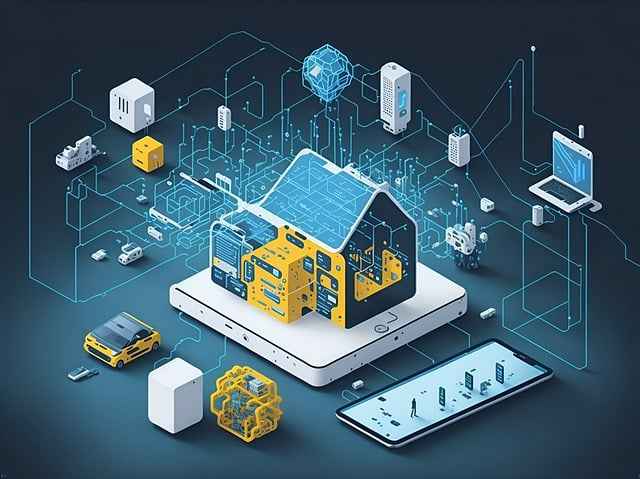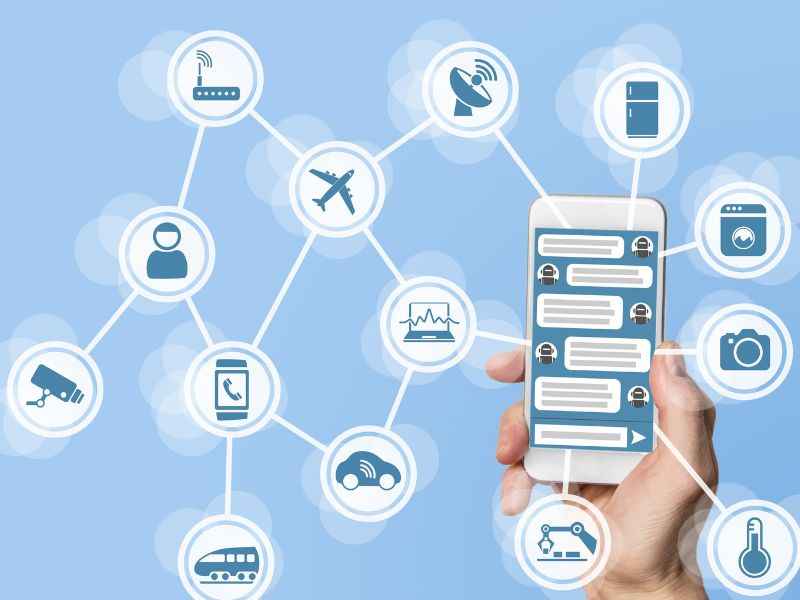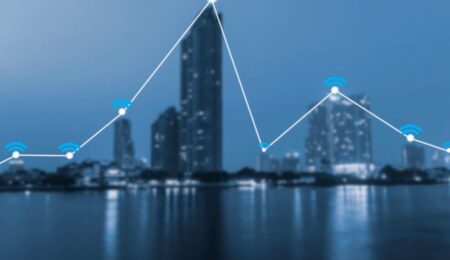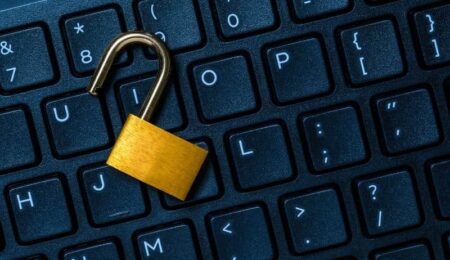Introduction
Welcome to our detailed guide on how to control and monitor IoT devices. IoT devices, the newest technological advancement, have rightfully taken the globe by storm. They provide enormous advantages like real-time data access, increased effectiveness, and cost savings.
Yet immense power also entails great responsibility. IoT device monitoring and management can be difficult due to security risks, compatibility problems, and connectivity difficulties. This extensive book attempts to provide you with a thorough understanding of how to control IoT devices, the difficulties you could encounter when managing them, and the steps you can take to overcome those difficulties.
But take care! Great rewards are accompanied by significant prudence. To prevent any accidents, exercise caution. So let’s enter the world of IoT gadgets while buckling up!
Understanding of How to Control IoT Devices
The refrigerator in your kitchen and the phone in your pocket are both examples of IoT devices. In essence, they are internet-connected machines with data transmission and reception capabilities. IoT devices, on the other hand, are sophisticated systems made up of many parts that work together to deliver a seamless experience. They go beyond being simple devices.

An IoT device’s components comprise both hardware—such as sensors, CPUs, and communication modules—and software, which enables the device to function and communicate with other devices. One thing to keep in mind is that although IoT devices are complicated, they are made to be simple to operate and have an intuitive interface.
It is impossible to overestimate the significance of how to control IoT devices. They offer real-time statistics and insights that support business decision-making. By automating routine operations, IoT devices improve productivity by freeing up time for more crucial ones. By eliminating the need for manual supervision and maintenance, they also save time and money.
In general, whether we are aware of it or not, IoT devices play an important role in our lives. They help us save time and money while providing priceless data insights. It’s critical to comprehend their elements and the benefits they offer to both individuals and corporations.
Benefits of IoT Devices
Let’s face it: Time is money in the world we live in today. We can run our daily operations more successfully if we use our resources more intelligently. In terms of Real-time Data Availability, Improved Efficiency, and Time and Cost Savings, IoT devices have paved the way.
In terms of hassle-free access to real-time data from essentially anywhere, the IoT’s real-time data access offers unmatched convenience. Imagine being able to keep an eye on your company’s numerous operations from your preferred coffee shop. You can accomplish just that with IoT.
We have been able to streamline and optimize our processes in previously unthinkable ways because to IoT’s increased efficiency. We can now remotely monitor and enhance the performance of our operations thanks to the sensor technology of IoT.

We now reach the topic of time and money savings. We can now automate our previously repetitive and time-consuming tasks by using IoT devices. IoT devices have shown to be essential in decreasing our workload and enhancing productivity, from remotely monitoring the temperature on a production line to optimizing a fleet’s performance, only when you know how to control IOT devices.
Why not act wisely right away and integrate IoT devices into your company’s operations? The advantages will be self-evident.
Challenges of How to Control IoT Device Monitoring
Due to the many difficulties involved, learning how to control IOT devices and monitor IoT devices can be a challenging undertaking. Control and monitoring of IoT devices raise serious concerns about security and privacy threats. IoT devices are vulnerable to hacking, which can compromise critical data and create opportunities for more serious attacks.
IoT devices are made with various software and hardware components, which makes it difficult to incorporate them into current systems. This creates compatibility concerns. Problems with connectivity and dependability are also common. To relay data, IoT devices need a reliable and quick internet connection, and bad connectivity can lead to data loss and device malfunction.
Moreover, different IoT devices typically demand varying amounts of power, and a faulty power source can cause a gadget to malfunction. It’s important to remember, though, that these difficulties can be overcome by carefully choosing suitable remote access and connectivity solutions. You can effectively control IoT devices this way, ensuring that they operate at peak efficiency.
Remote Access for IoT Devices
IoT Devices with Remote Access:
In order to effectively monitor and how to control IoT devices, selecting the correct remote access solution is crucial. You may remotely monitor your devices, solve issues, and push updates with the proper solution.
A secure and dependable connection, the use of encryption, and the implementation of user access controls are best practices for remote access. Having a backup strategy is also essential in case of connection loss or interruptions.
Think about aspects like cost, usability, and device compatibility when selecting a remote access solution. Virtual Private Networks (VPNs), Remote Desktop Protocols (RDPs), and cloud-based management platforms are a few examples of well-liked alternatives.
Businesses may save time, money, and have better device control by implementing efficient remote access solutions. Avoid letting network problems interfere with your IoT operations. Make the most of your Internet of Things devices by selecting the appropriate remote access solution.
IoT Connectivity Solutions
Successful product development and business operations depend on IoT Connectivity Solutions. It can be difficult to comprehend the various connectivity possibilities and choose the best one. These are some factors to take into account while selecting the best IoT connectivity solution.
It’s crucial to first comprehend the many connectivity possibilities offered. Wi-Fi, Bluetooth, cell phones, Zigbee, and Z-Wave are your options. There are many qualities, benefits, and restrictions associated with each of these choices that must be taken into account.
Second, while choosing a connectivity option, considerations like security, range, power consumption, and data usage need to be made. Given that IoT devices might communicate sensitive data, the security of the connectivity solution is essential. For improved connectivity, the solution’s range should be considered, and the device’s intended use should determine the device’s power consumption.
In conclusion, it’s important to pick the best choice that satisfies the device’s requirements when choosing an IoT Connectivity Solution. In order to choose the optimal solution, it is essential to have a thorough awareness of the various connectivity possibilities and the necessary considerations.
IoT Device Management Platforms
Platforms for managing IoT devices are a crucial component of every successful IoT system. You can remotely monitor and manage your IoT devices thanks to a management platform, which serves as the command center. It gives you the ability to access real-time data, carry out automatic updates, and make decisions quickly.
It’s crucial to choose a platform that supports a variety of device types and protocols. You should be able to manage the complete IoT ecosystem with ease thanks to its comprehensive device view. In order to reduce downtime, the platform should make updating and troubleshooting devices easier.
The platform should also have strong security features that guarantee data protection and hinder illegal access. You should be able to configure access controls, permissions, and device policies while keeping an eye on network activity and questionable behavior.
You may save time, effort, and money by selecting the best IoT management platform. It enables you to improve productivity and streamline your processes, allowing you to concentrate on making strategic decisions. Businesses can anticipate higher revenue and profitability, as well as higher customer satisfaction, with the correct platform in place.
IoT Device Management Platforms are crucial to the development of the IoT ecosystem, to sum up. It’s critical to choose one that can scale as your organization expands and satisfy your unique requirements.

Conclusion
Phew! It was a very thorough tutorial on remotely managing and watching over Internet of Things equipment! Here are a few crucial conclusions that sum everything up. IoT devices, first and foremost, offer real-time data availability, increased effectiveness, and cost and time savings.
However, obstacles, including hazards to security and privacy, problems with interoperability, and problems with connectivity and dependability, must be overcome. You must pick the best remote access, connection, and management platform in order to effectively operate, monitor, and how to control IoT devices.
FAQs
IOT device control is a thorough manual on connectivity and remote access for Internet of Things (IoT) product development success. The manual gives readers detailed advice on how to manage and keep track of their IoT devices.
No, there are no recurring costs associated with How to Manage IoT Devices; it is a one-time transaction.
The following are the main merits and characteristics of How to Control IoT Devices:
1. Clear and straightforward instructions for remotely operating IoT devices
2. Offers thorough guidance on how to manage and keep track of IoT devices
3. Aids in the development of successful IoT products – May be used with different IoT platforms and projects
4. Remote device management and monitoring saves time and resources.
All of the most popular operating systems, including Windows, Mac, and Linux, are compatible with How to Control IoT Devices.
You can refer to our troubleshooting guide, which is included in the handbook, if you encounter any problems. You can ask our support staff for help if the problem continues.
Yes, How to Control IoT Devices offers thorough guidance on how to solve typical IoT issues like connectivity problems, device malfunctions, and software failures.




Leave a Reply